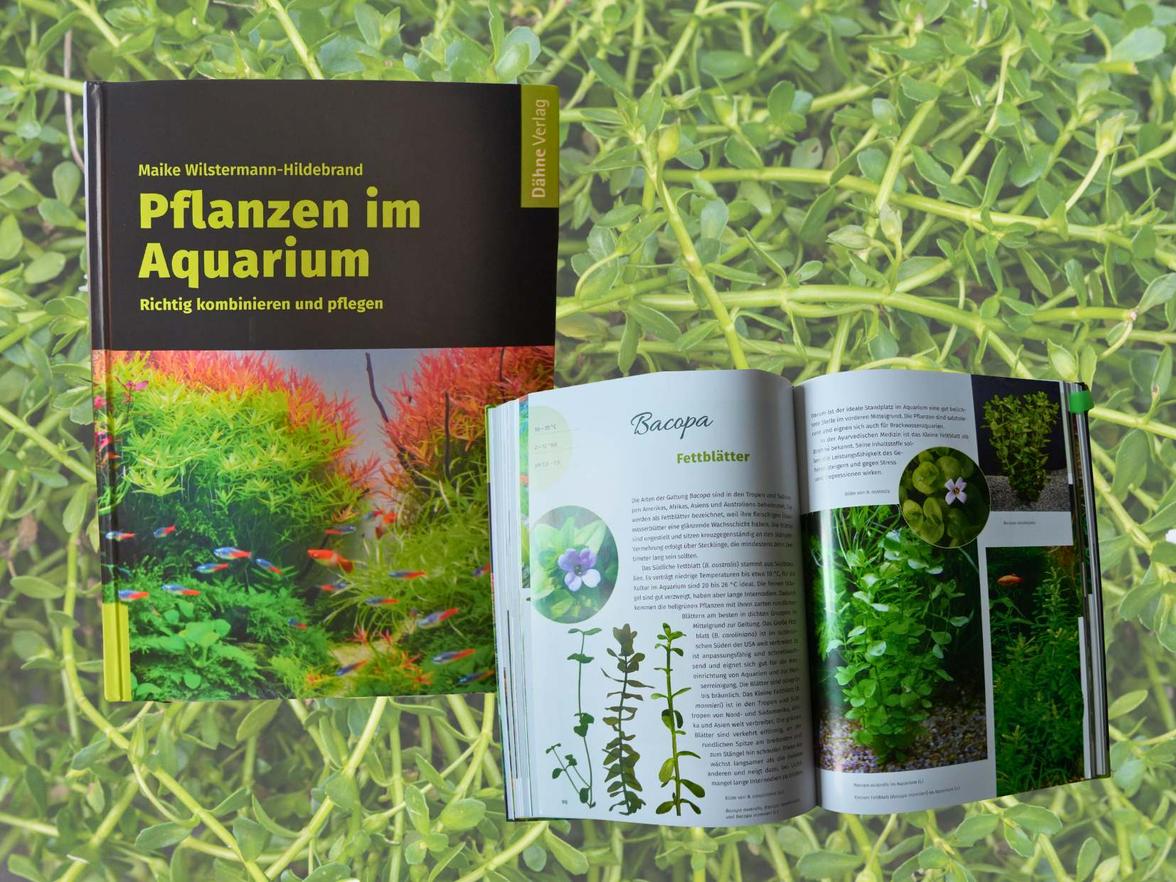Discover the secrets of a thriving aquarium: Maike Wilstermann-Hildebrand's book as your guide to the world of aquatic plants
Are you interested in how to achieve perfect balance in your aquarium? Read about how online lectures from German aquarists have revealed new horizons in the care of aquatic plants and why the book by Maike Wilstermann-Hildebrand: Pflanzen im Aquarium richtig kombinieren und pflegen is a true treasure. This review will guide you through key topics – from ideal lighting and nutrition, through various types of aquariums, to detailed characteristics of plants and effective strategies in the fight against algae. Discover how easily to understand the complex relationships in your aquarium and how to become a master in creating a thriving aquatic biotope.
When I started attending online lectures organized by aquarists from Germany some time ago, it was like a revelation for me. Suddenly, I could hear opinions, research results, and advice directly from a knowledgeable source, all in well-prepared presentations. And mind you - online and for free!
One of the lectures on plants caught my attention so much that I didn't hesitate and ordered a book from the lecturer and also the author Maike Wilstermann-Hildebrand. The book arrived carefully packaged, and as soon as I opened it, I was greeted by beautiful photographs on glossy paper. I immediately began to rejoice not only in the beautiful book but also felt that old familiar scent of new pages. It was a lovely introduction even before I delved into reading.
The introductory chapters focus on a detailed analysis of aquarium plants as such. This is followed by geographical distribution, plant propagation, various types of substrates, and their advantages and disadvantages.
Light is inseparable from plants, which is why the chapter on this topic is extensive. Here, among other things, we find examples of plants, their light requirements, and an explanation of the moment when a particular species reaches the so-called "saturation point." It is very practical and beneficial to know when a specific plant is optimally satisfied. For example, Amblystegium serpens (nano moss) has this light saturation point very low, at just 54 lux. On the other hand, for Cabomba aquatica, it's a different story – its saturation point occurs only at 3000 lux.
For plants to thrive well, it is not enough to have sufficient light; it is also necessary to ensure enough nutrients. If I ever had uncertainty about the functioning of individual components in plants, this publication helped clarify everything for me. An example could be the paragraph titled "Calcium, Magnesium, and Potassium."
These three components are essential minerals for plants. Potassium is present in cells only in the form of ions and primarily regulates the osmotic pressure of cells. Calcium stabilizes cell walls and serves as a messenger and catalyst for chemical reactions in cellular metabolism. Magnesium is a component of chlorophyll and various enzymes.*
Previously, my friends and I, who are aquarists, discussed types of aquariums, and we couldn't agree on a list. So it's no wonder that the chapter 'Types of Aquariums and Their Creation' appealed to me. The author describes significant types of aquariums from her perspective and adds recommendations for their planting.
The following chapter 'Planting' offers an overview of plants for the front sections of the aquarium, for the middle sections (plants sized 10 to 20 cm), and for the back parts of aquariums (plants over 20 cm).
This brings us roughly to the middle of the book, and we can dive into a detailed study of each plant species. The chapters are very pleasantly organized alphabetically, and the design is flawless. What particularly delighted me is the distinction between the various variants of a given species. An example could be Anubias, for which we have 13 photographs of plants with their names. So when I next shop online and find that the advertised variant didn't arrive at my home, I will have somewhere to look and check what I actually ordered.
After the overview of plants, there is a chapter on fertilization and plant deficiencies. We learn, for example, what leaves look like when they lack calcium or when someone has nibbled on them. Depending on the type of damage, we also have a guide on how to identify the culprit, whether it was a catfish or perhaps a snail?
And if there aren't enough plants in the aquarium, algae will happily utilize the nutrients. In the chapter about algae, the author identifies and describes the algae in the pictures, explaining what suits them best. From this, every aquarist can relatively easily deduce what to change to get rid of the particular algae.
Conclusion
The book by Maike Wilstermann-Hildebrand: Pflanzen im Aquarium richtig kombinieren und pflegen is for me a continuation of the inspiring online lecture that led me to it. It provides a comprehensive and understandable overview of aquarium plants – from light and nutrients to types of aquariums and the battle with algae.
Thanks to its clear structure, a wealth of practical advice, and extraordinarily high-quality photographs, it represents an invaluable guide, going in-depth where necessary while remaining readable and inspiring. For anyone who wants to have a thriving aquarium full of healthy plants, this book is an excellent source of knowledge to which you will gladly return.
Citation:
* Wilstermann-Hildebrand, Maike. 2022. Pflanzen im Aquarium richtig kombinieren und pflegen. Dähne Verlag. Page 51.
Basic information about the book:
Title: Pflanzen im Aquarium richtig kombinieren und pflegen
Author: Maike Wilstermann-Hildebrand
Year of publication: 2022
Publisher: Dähne Verlag
ISBN: 978-3-944821-78-8

